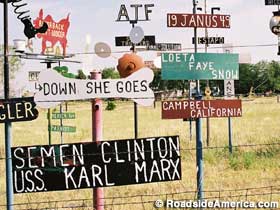President Obama is taking over local government in America, and almost no one is talking about it. Obama’s new Affirmatively Furthering Fair Housing (AFFH) regulation is his vehicle for the effective federalization of . . . well, pretty much everything. Breathtaking in
its radicalism, AFFH easily matches Obamacare in its transformative potential. We’re talking about a regulation with the capacity to put virtually every decision ordinarily made by local voters and their elected representatives into the hands of the federal government — how you run your schools; whether the place you live will have the character of a small town, a bedroom suburb, or a densely packed urban center; whether you drive to work on well-paved roads or take public transportation; which neighborhoods your city will spend its money on, and more.
Obama and a compliant mainstream press
desperately want to downplay AFFH. That’s because it’s a total political loser for the Democrats. So far, Obama has succeeded in keeping this gigantic regulatory monster largely out of public view, but that could easily change. AFFH is one Obama transformation that you and your neighbors have the power to stop, and I’m going to tell you how to do it.
First, find out if your local government accepts grants from the Department of Housing and Urban Development. (I’ll show how to do this below.) Second, if your city, town, suburb, or county does take HUD money, press your local leaders to refuse all future HUD grants. Otherwise your hometown will fall under the federal boot — at least it will if Hillary Clinton wins in 2016. Only a Republican president would rescind Obama’s AFFH rule. So if a Democrat wins the presidency in 2016, Obama will have succeeded in bringing local government in the United States under the effective control of the feds.
All it will take to stampede local officials into silent compliance with AFFH is the threat of withdrawing federal dollars — and their fear of being forced to raise local taxes as a result. If that’s not enough, local officials will fear being accused of bigotry for failing to go along with AFFH’s extensive racial and ethnic housing quotas. In the face of these pressures, local officials will commit their jurisdictions to the full menu of HUD’s demands and make legally binding promises before the public even notices what’s happened. By then it will be too late to stop the federal takeover. To prevent this, a riled-up public needs to go to local leaders right now and say, “Hands off that HUD money!”
We need a tea-party revival. The same kind of grassroots movement that poured into congressional town halls to protest Obamacare needs to pour into town councils and county board meetings across this country to force local governments to stop taking HUD money. A movement like this could shift the political landscape, forcing a dangerous issue for the Democrats into the open and mobilizing the public against both Obama’s “fundamental transformation” and Hillary Clinton’s election (while reminding us that these are really the same thing). It’s a tall order, but if we don’t soon see this kind of popular movement, you can kiss local government in America goodbye.
Unfortunately, Republican leaders in Congress recently
caved on AFFH while negotiating the omnibus spending bill. So we’re stuck with this massive federal overreach, unless a popular rebellion against HUD money comes along to stop it.
To get new HUD money, local officials will now have to fill out a massive and
incredibly intrusive questionnaire called the AFFH “
Assessment Tool.” Local officials will have to explain to HUD whether your region has any concentrations of low-income African Americans, Hispanic immigrants, poor Syrian refugees with limited English proficiency, and more. If too many of the low-income minorities in your region live too close together — or not close enough to top-notch schools, transportation hubs, and business districts — HUD will force your suburb or small town to change its zoning regulations, build high-density low-income housing, and “affirmatively advertise” the new housing units to minorities who live outside of your municipality.
HUD may force your quiet small town to build up a mini-downtown to accommodate the new residents. It may force your local school to admit students who live outside the district. HUD may force you and your fellow taxpayers to fund a new mass-transit line that lets city residents travel to the suburbs, rather than spending funds to keep the highway you commute on in good repair. And if your city allocates spending equally to all neighborhoods, HUD may force it to shift the lion’s share of public spending to minority neighborhoods instead.
Mind you, we’re not talking about intentional discrimination, which was rightly banned long before Obama issued AFFH. Anyone who wants to live in your town and can afford a home there should, of course, be permitted to do so, regardless of race or ethnicity. AFFH is about going beyond mere bans on intentional discrimination to mandatory low-income housing quotas. This federal manipulation is as much about class — about leftists pushing to economically integrate neighborhoods — as it is about race or ethnicity.
On top of all this, the structure of the new AFFH Assessment Tool lures local officials into a trap. The Assessment Tool virtually invites you to attribute the existence of racial and ethnic housing clusters in your locality to supposedly biased zoning laws. So just by filling out the grant application, local officials could unknowingly be handing the feds a statement that could be construed in court as an admission of “exclusionary zoning” practices.
And keep in mind that just by accepting HUD money, localities are obligated to sign contracts in which they promise to abide by federal as well as local housing law. This alone creates substantial vulnerability to the sort of lawsuit that has entangled Westchester County, New York, in a six-year nightmare of federal harassment.
Between HUD’s ability to withdraw grant money, legal obligations undertaken by signing HUD’s grant contract, and legal liabilities stemming from bogus “admissions” coaxed by the AFFH Assessment Tool, local self-government in America will become a thing of the past.
Knowing how controversial all of this will be, the Obama administration has taken a leaf from its Obamacare strategy and created a new application schedule for HUD grants. The administration has extended application deadlines so that new HUD grant decisions won’t be made until after the 2016 election. In fact, the application process has been staggered so that the majority of HUD’s demands won’t become obvious until after the 2018 mid-terms.
So the time for a popular revolt against AFFH is now — before the 2016 election, before your local elected officials sign their HUD contracts, and before they complete Obama’s creepy and controlling new AFFH “Assessment Tool.”
In fact the rebellion has already begun. Westchester County, the guinea pig for Obama’s new housing policy, decided several years ago to stop accepting HUD money. Then, in 2013, after viewing a 12-minute
video on Westchester’s battle with HUD, the New Hampshire towns of Goffstown, Rindge, and Bedford
decided to stop applying for HUD money. After Obama’s release of the finalized AFFH rule in July of 2015, a group of concerned citizens in Douglas County, Colorado, organized to
stop their area from applying for HUD money, and set up a
website to encourage national opposition to AFFH. What’s needed now is for talk radio and national conservatives to jump into this battle and fan these scattered brushfires of rebellion into a full-fledged national movement.
To find out if your hometown has been taking money from HUD’s largest and most popular program, the Community Development Block Grant (CDBG), go to
Obamazone.org, plug in your state, and search for CDBG grants for your area. (Keep in mind that recipients of several other HUD grants — HOME, ESA, and HOPWA — are also required to use the AFFH Assessment Tool.) If your city, town, or county currently takes HUD money, organize your neighbors and get your locality to stop applying for new housing grants. (For more background on AFFH, go
here and
here.)
Unfortunately, turning down HUD money is not a perfect solution. The federal government can bring a disparate-impact housing suit against your district whether it accepts HUD money or not. The likelihood of such a suit is greatly reduced by refusing the federal grant money, but it certainly isn’t eliminated.
And when local officials resist your calls to drop HUD grants by threatening to cut services or raise taxes, they’ll have a point. The devilishly clever thing about AFFH is that Obama and the Democrats win either way. If your hometown takes the HUD money, it will swiftly fall under the control of left-leaning federal bureaucrats. But if you leave HUD’s grant money aside, it will simply be redistributed to Democratic-leaning districts.
Realizing the trap they’re in is going to make people angry — and rightly so. It’s also going to make them look for a long-term solution. Given Congress’s recent failure to defund AFFH, there’s only one solid solution available. It will take a Republican Congress working with a Republican president to withdraw Obama’s AFFH rule and limit the reach of disparate-impact theory by amending federal housing law. Only then will the interlocking challenges of the Supreme Court’s 2015 disparate-impact decision and Obama’s AFFH rule be fully overcome.
The best way to arrive at this solution is a grassroots rebellion against HUD money that staves off the abuses of AFFH, stiffens Congress’s spine, and injects this issue into the presidential campaign. Only when the public realizes that a President Hillary Clinton means the end of local government in America will the stakes in 2016 have been truly placed on the table.
— Stanley Kurtz is a senior fellow at the Ethics and Public Policy Center. He can be reached at comments.kurtz@nationalreview.com
Editor's Note: Marin County already has taken this HUD Money and is now in the process of complying with its terms. Marinwood-Lucas Valley seems to be the target neighborhood for most of these high density projects.
















